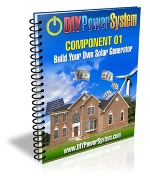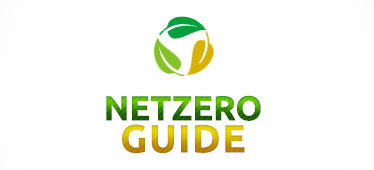 Renewable energy is attracting a lot of attention these days. That’s especially true of renewable energy systems you can build for your own home: solar panels on the roof, your own wind turbines, biodiesel fuel powering a generator.
Renewable energy is attracting a lot of attention these days. That’s especially true of renewable energy systems you can build for your own home: solar panels on the roof, your own wind turbines, biodiesel fuel powering a generator.
As the price of conventional electricity rises while that of solar and wind power fall, the savings from generating your own renewable energy are becoming more and more substantial, and join together with the environmental benefits of renewable energy over fossil fuels.
A lot of e-
 David Knight, the developer of DIY Power System (which you can find at www.diypowersystem.com) has an interesting variation on the theme.
David Knight, the developer of DIY Power System (which you can find at www.diypowersystem.com) has an interesting variation on the theme.
From his e-
All five of these books are available from his website for a total of $97, with a 60-
The first two books of the five (Build Your Own Solar Generator and Build Your Own Wind Turbine) give you the knowledge to construct the most essential components of any home renewable energy system: the thing that actually generates the power, whether in the form of solar panels on the roof, or of wind turbines atop towers to catch the wind.
The first book also goes into the theory of the photovoltaic effect and how solar power actually works to convert sunlight into electricity.
The third book, Build Your Own Batteries, is something you don’t see a lot of online (whereas there are several sites that can provide information on how to make solar panels and wind turbines).
An off-
The other method besides batteries is to use a grid-
The fourth book, Make Your Own Biodiesel, shows how you can produce an equivalent to diesel fuel from waste vegetable oil. You can get waste oil for free from restaurants; they would otherwise have to dispose of it in ways that would probably cost them money, so they’ll be happy to let you take it off their hands most of the time.
This waste oil can be processed to yield a type of fuel similar to diesel oil, which can be used in any car or truck with a diesel engine or to power an oil furnace. It’s a type of renewable energy because, unlike true diesel fuel, it’s not made from petroleum but rather from plant sources.
Knight’s fifth book really caught my eye. Instructions on how to build your own house aren’t found online every day! But he’s quite serious. This book will tell you how to acquire property, obtain permits and building materials, and by working part-
Obviously that would save quite a bit of money, and even if you never decide to build your own home, the knowledge would surely come in handy for purposes of home repair or remodeling.
